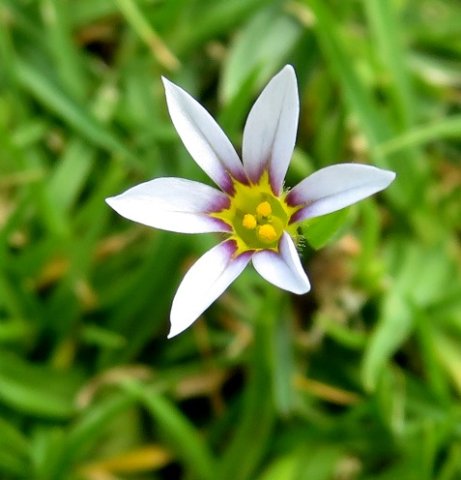Romulea

Author: Ivan Lätti
Photographer: Thabo Maphisa
Romulea is a genus of cormous perennials in the Iridaceae family. Commonly called froetang, from the Portuguese fruta, and knikkertjie in Afrikaans. The geophytes grow annual above-ground leaves and flowers from bell-shaped or asymmetrical corms, the perennial parts. The corms are wrapped in fibrous, cartilaginous, woody or papery coats. There is often a ridge at the corm base where the roots emerge. The short stem may be subterranean or visible above-ground.
The leaves are thread-like, grooved longitudinally or mid-ribbed. The number of leaves varies across species, the lowest ones only cataphylls.
The flowers grow solitary at branch tips, usually near the ground. The flower is subtended by two green bracts. In some plants the bracts bear brown marks, often with transparent margins, particularly the inner one. Romulea bracts and corms feature much in species identification, besides the usual parts, the leaves and flowers.
The corolla base is usually white or yellow in the centre, often lighter coloured than the rest of the tepals outside the cup. The tepals are joined at the base, their free tips usually spreading. The corollas are variously coloured in the many species.
Three stamens arise from the bases of the outer tepals, erect in the flower centre. The style branches below the level of the anthers. The ovary is inferior and three-locular.
The Romulea genus comprises about 85 species. They grow in Africa, the Middle East and southern Europe, but mainly in southern Africa. Many species are endemic to the winter rainfall areas of the south-western parts of South Africa, 54 species in the fynbos and 13 in the Little Karoo.
The juicy or mealy fruits are eaten by children and animals. Francolins or spurfowls are skilled at finding the corms, scratching them from the ground to eat. Some Romulea plants have become popular as garden subjects.
The plant in picture, seen in Kirstenbosch but not planted there, resembles Romulea rosea and R. tabularis (Leistner, (Ed.), 2000; Vlok and Schutte-Vlok, 2015; Manning, 2007; iNaturalist; iSpot).

